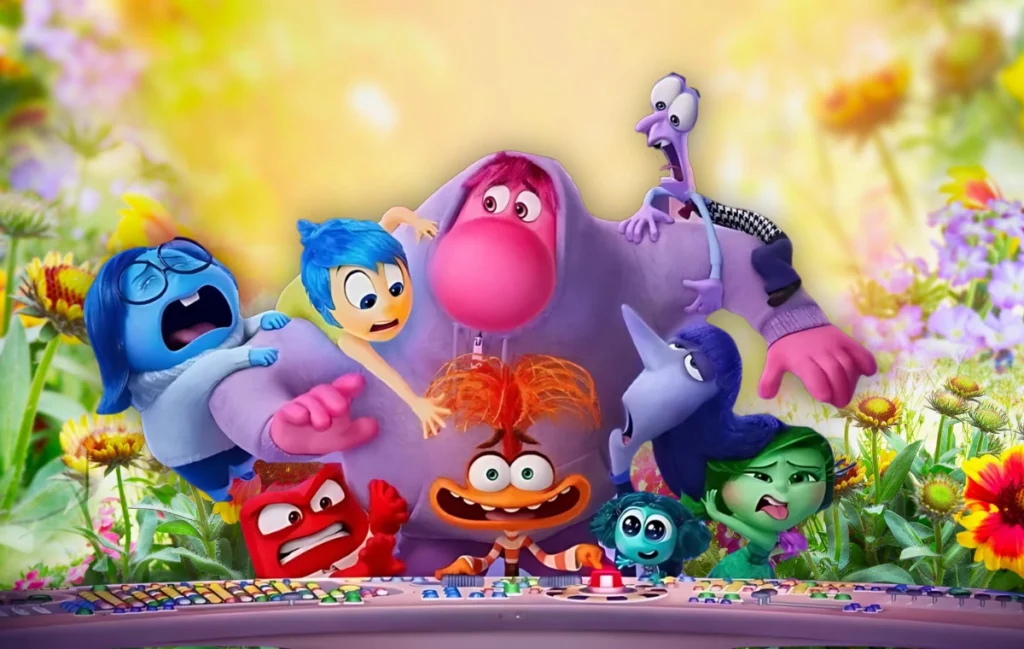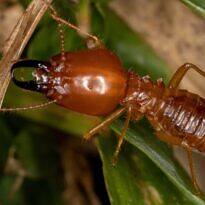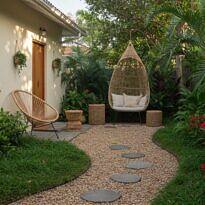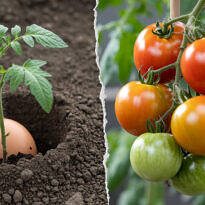There is no doubt that Disney’s Inside Out franchise is a true success! With characters that are charming emotions, the animated sequence by Pixar captivates children and adults alike.
But have you ever stopped to consider how important this trend of discussing emotions is for better understanding ourselves and thus relating more carefully with ourselves and others? The release of the second movie “Inside Out 2” brought a new wave of reflection on emotions and their colorful representations. Even the seemingly “ugly” emotions have their value in our humanity.
Feelings such as anger, fear, sadness, envy, and embarrassment are inherent parts of us, whether we like it or not.

But what does this have to do with the garden?
This concept of emotions is closely related to art, which, contrary to what many might think, is not always pleasant and beautiful. It can be impactful, melancholic, unsettling, and even provoke disgust, depending on the artist’s intentions and the emotions evoked in each viewer.
Landscaping, as a form of art, can utilize all the emotions from the film as fantastic inspiration for the garden, provoking various emotions in those who walk through it, from intense passions to graceful nostalgia.
Shall we explore how we can translate the emotions from the film into a vibrant and emotionally engaging garden? Get ready for this journey where each color and plant can represent a feeling, making your garden unique, stunning, and emotional!

Anger – Red
Anger is a powerful and intense emotion that sets us in motion, filling us with energy. If used positively, this feeling makes us more proactive and motivated. In the film, it is represented by the color red.
In the garden, red can be equally impactful and dynamic. Red flowers bring energy and passion to the space. Like the character in the film, who emits flames from his head when angry, we can create combinations with a palette of colors reminiscent of fire, such as orange and yellow. Red is ideal for social and entertainment areas, where energy and conversation are welcome.
Red Plants:
- Firestick (Euphorbia tirucalli): With its vertical and bright stems, the Firestick adds a sculptural and modern appearance to the garden, ideal for creating striking contrasts in beds and pots.
- Lady’s Slipper (Thunbergia mysorensis): The Lady’s Slipper, with its hanging red slipper-shaped flowers, is perfect for pergolas and trellises, adding an exotic and dramatic touch to vertical garden spaces.
- Flamboyant (Delonix regia): The Flamboyant, with its lush red flowers, is a majestic tree that creates vibrant and colorful shade, transforming any garden into a tropical spectacle.
- Poinsettia (Euphorbia pulcherrima): Known for its bright red bracts, the Poinsettia adds a festive and welcoming touch to the garden, especially impactful during the holiday seasons.
- Scarlet Sage (Salvia splendens): The Scarlet Sage, with its vertical red inflorescences, is an excellent choice for borders and beds, offering vibrant color and attracting pollinators throughout the growing season.
- Illawarra Flame Tree (Brachychiton acerifolius): The Illawarra Flame Tree, with its canopy full of intense red flowers, provides a spectacular display of colors, ideal for large gardens, creating an impressive and breathtaking focal point.
Landscaping Tip: Create a bed of red flowers in areas where you want to highlight a sense of intensity, energy, and passion. Red is excellent for attracting pollinators, such as hummingbirds and butterflies. Just be careful not to overdo it! Too many red flowers can end up saturating the garden, making it tiring.

Sadness – Blue
Sadness, represented by blue, is an introspective emotion. Despite being associated with sadness, blue is a serene color, often linked to tranquility, trust, and reflection. In the garden, blue can create an atmosphere of peace and serenity, ideal for meditation and contemplation spaces.
This color is also associated with trust and stability, helping to create a safe and welcoming environment. Blue is a great choice for garden areas where you want to promote safety and well-being. Additionally, blue can encourage reflection and concentration, making it an ideal color for meditation gardens or reading spaces.
Blue Plants:
- Blue Hydrangea (Hydrangea macrophylla): The large, lush blue inflorescences of the blue hydrangea create an impressive visual impact, bringing freshness and tranquility to shaded areas of the garden.
- Blue Iris (Iris germanica): The elegant blue flowers of the iris are ideal for borders and beds, adding a touch of sophistication and beauty to any landscape.
- Plumbago (Plumbago auriculata): The delicate blue plumbago is perfect for forming hedges, formal topiary shrubs, or being trained as a climber, covering walls and other supports, providing a cascade of blue flowers that create an enchanting and refreshing setting.
- Blue Thunbergia (Thunbergia grandiflora): The blue thunbergia is a vigorous climber that offers an explosion of blue flowers, ideal for pergolas, arches, and trellises, bringing an exotic touch to the garden.
- Bellflower (Campanula spp.): Bellflowers, with their bell-shaped flowers, are perfect for cottage-style gardens, adding delicate charm and a soft blue palette to beds.
- Agapanthus (Agapanthus africanus): The majestic blue agapanthus are perfect for creating structured and elegant borders, with their elevated globular inflorescences bringing a touch of refinement to the garden.
Landscaping Tip: Use blue plants in relaxation areas, such as meditation gardens or near benches. Blue is ideal for creating a peaceful and refreshing environment.

Joy – Yellow
Joy is a bright and vibrant emotion, represented by the color yellow. In the garden, yellow can bring a sense of optimism and energy, illuminating the space and creating a vibrant and welcoming atmosphere. This color can also increase energy and vitality, stimulating activity and social interaction. It is an excellent choice for leisure areas or play spaces in the garden.
Yellow has the ability to brighten any space, creating a sense of warmth and light. It can be used to highlight specific areas of the garden or to create a bright and inviting focal point.
Yellow Plants:
- Sunflower (Helianthus annuus): The sunflower, with its imposing yellow flowers that follow the movement of the sun, brings a touch of joy and vitality to the garden, as well as being a natural attraction for pollinators.
- Marigold (Tagetes erecta): Marigolds, with their vibrant yellow flowers, add a burst of color to beds and borders, and help to naturally repel unwanted pests.
- Pansy (Viola x wittrockiana): Pansies, with their delicate petals in shades of yellow, purple, and blue, provide a romantic charm to the garden, perfect for pots, window boxes, and borders.
- Croton (Codiaeum variegatum): The croton, with its shiny and variegated leaves in shades of yellow, red, and green, offers an exotic and tropical aesthetic, ideal for enlivening different areas of the garden.
- Yellow Allamanda (Allamanda cathartica): The yellow allamanda, with its large and showy flowers, creates a cascade of color and beauty along fences and pergolas, filling the garden with its sunny brightness.
- Yellow Trumpet Tree (Handroanthus albus): The yellow trumpet tree, with its spectacular golden blooms, transforms any landscape into a colorful spectacle during spring, becoming the focal point of the garden with its grandeur and natural beauty.
Landscaping Tip: Combine yellow and blue flowers to create cheerful and vibrant beds. These colors together bring balance and a contagious sense of happiness.

Fear – Purple
Fear is an emotion we try to avoid, which brings us discomfort, and in the film, it is represented by the color purple. But fear is an important feeling, functioning to protect us from dangerous and unknown situations. We should use it wisely and not let it paralyze us. In the garden, purple plants can bring a sense of mystery and sophistication.
Purple is a rich and mysterious color, often associated with nobility, spirituality, and creativity. In the garden, purple can create a magical and inspiring atmosphere, ideal for spaces of contemplation and creativity. Purple is traditionally linked to nobility and sophistication. It can be used to create a sense of luxury and elegance in the garden.
This color also evokes feelings of spirituality and mystery, making it a great choice for meditation gardens or contemplative spaces. Additionally, purple can stimulate creativity and inspiration. It is an ideal color for garden areas dedicated to art or creative reflection.
Purple Plants:
- Velvet Plant (Gynura aurantiaca): The velvet plant, with its velvety and vibrant leaves, adds a unique texture and touch of luxury to your garden, perfect for borders and pots.
- Persian Shield (Strobilanthes dyeriana): With metallic leaves that shine in shades of purple and silver, the Persian shield is an exotic choice that brings an air of mystery and sophistication to shaded beds.
- Lavender (Lavandula angustifolia): Lavender, with its fragrant purple flowers, not only beautifies the garden with its delicate color but also creates a relaxing and welcoming atmosphere.
- Lilac (Syringa vulgaris): The aromatic flowers of the lilac, in lush purple clusters, transform any garden into a fragrant and visually charming retreat in spring.
- Wisteria (Wisteria sinensis): With its long, pendulous clusters of delicately scented flowers, the wisteria covers pergolas and trellises with a cascade of purple beauty, creating a spectacular focal point.
- Jacaranda (Jacaranda mimosifolia): The jacaranda, with its canopy covered in intense purple flowers, offers a stunning view and transforms large garden spaces into a scene worthy of admiration.
Landscaping Tip: Use purple plants in areas where you want to create an atmosphere of mystery or sophistication. Purple is ideal for night gardens, where its flowers can shine under the moonlight.

Disgust – Green
Disgust, represented by green, is an emotion of aversion that protects us from potential dangers, preserving life. Green is thus the color most associated with nature and vitality, evoking feelings of balance, harmony, and renewal. In the garden, green is the base that unites all elements, creating a sense of tranquility and rejuvenation.
Green is known to promote a sense of balance and harmony, helping to create a peaceful environment. It is ideal for garden areas where you want to promote meditation and relaxation. This color also evokes feelings of renewal and growth, symbolizing life and regeneration. Green can help create a sense of freshness and vitality in the garden.
Green Plants:
- Boston Fern (Nephrolepis exaltata): The Boston fern, with its long, arching fronds, adds a touch of elegance and freshness to shaded garden areas, creating a green and tranquil refuge.
- Hosta (Hosta spp.): Hostas, with their large and varied leaves in different shades of green, are perfect for filling shaded beds, providing texture and color to the garden with their different green tones.
- Curculigo (Curculigo capitulata): With its large, shiny lance-shaped leaves, the curculigo adds a tropical and exotic aspect to the garden, ideal for shaded areas.
- Heartleaf Philodendron (Philodendron hederaceum): With its heart-shaped leaves variegated in green and yellow, it brings a vibrant and exotic touch to indoor and outdoor gardens, excellent for growing in pots or as a border plant.
- Bells of Ireland (Moluccella laevis): With its tall, green inflorescences, it creates a unique effect in the garden, adding a vibrant green tone to beds and floral arrangements.
- Golden Wick Elm (Ulmus glabra ‘Lutescens’): With its lemon-yellow leaves and majestic form, this elm offers a luminous and elegant contrast to the garden, being a magnificent choice for standout trees or in avenues.
Landscaping Tip: Create lush green areas to bring a sense of tranquility and freshness to the garden. Green plants are essential for providing a balanced and harmonious base. Play with different shades of color, bringing dynamism to the garden.

Anxiety – Orange
Anxiety is an agitated and intense emotion, represented by orange. This color is known for evoking feelings of enthusiasm, creativity, and warmth, as well as stimulating the appetite. In the garden, orange can create a friendly and stimulating atmosphere. Orange is often associated with enthusiasm and positive energy. It can be used to create a sense of joy and animation, ideal for garden areas where you want to promote social interaction and activity.
This color can also stimulate the mind, encouraging creativity and innovation. It is an excellent choice for meditation gardens or outdoor workspaces where inspiration and creativity are desired.
Orange Plants:
- Gazania (Gazania rigens): The gazania, with its bright orange flowers, is ideal for borders and pots, bringing a touch of sunshine to the garden with its heat and drought resistance.
- Daylily (Hemerocallis x hybrida): The daylily offers vibrant orange flowers that bloom for a single day, creating a daily spectacle of color and beauty in beds and borders.
- Lily (Lilium spp.): Orange lilies, with their large and fragrant flowers, add a note of elegance and drama to any garden, perfect for beds and floral arrangements.
- African Tulip Tree (Spathodea campanulata): The African tulip tree, with its trumpet-shaped orange flowers, is an imposing tree that provides shade and an exotic and tropical look to the garden.
- Calendula (Calendula officinalis): Calendula, known for its orange flowers and medicinal properties, is an excellent choice for borders and vegetable gardens, bringing color and therapeutic benefits.
- Flame Vine (Pyrostegia venusta): The flame vine, with its cascading orange flowers, is a vigorous climber that transforms walls and fences into spectacles of color during the winter months.
Landscaping Tip: Use orange plants in areas where you want to create a sense of energy and vitality. Orange is ideal for entrance beds and standout areas.

Envy – Turquoise
Envy, represented by turquoise (jade, cyan, tiffany), is a complex emotion that can be transformed into a sense of exoticism in the garden. This color also evokes feelings of renewal and serenity, helping to create an atmosphere of peace and freshness. Turquoise is an excellent choice for meditation gardens or relaxation spaces.
Additionally, turquoise can promote balance and harmony, helping to create a tranquil and peaceful environment. It is an ideal color for therapeutic gardens or resting spaces. Certainly, the use of this exotic color can create a beautiful garden that arouses envy in the neighborhood.
Turquoise Plants:
- Foxtail Agave (Agave attenuata): With its wide leaves, the foxtail agave adds texture and elegance to the garden, ideal for creating focal points and contrasting with darker foliage plants.
- Echeveria (Echeveria spp.): Echeverias, with their compact rosettes in various shades of turquoise (among other colors), are perfect for creating geometric patterns and adding a touch of sophistication to the garden, as well as being great for low-maintenance gardens and interiors.
- Paddle Plant (Kalanchoe thyrsiflora): With its rounded and vibrant leaves, it is an excellent choice for dry gardens and rocky areas, offering an interesting visual contrast and a touch of color that can vary with the season.
- Forget-Me-Not (Myosotis spp.): With its small delicate flowers, it is ideal for bed borders and shaded areas, bringing subtle charm and a touch of color that brightens any garden space.
- Jade Vine (Strongylodon macrobotrys): With its impressive pendulous turquoise flowers, it is an excellent choice for covering pergolas and trellises, adding an exotic touch and an envy-inducing visual effect to the garden.
- Cider Gum (Eucalyptus gunnii): The cider gum, with its refreshing aroma and bluish foliage, is ideal for creating a relaxing atmosphere in the garden, as well as being an excellent option for forming privacy screens and adding height to landscaping.
Landscaping Tip: Create a succulent garden with turquoise tones for a sense of freshness and exoticism. Turquoise plants are great for adding a modern and unique touch to the garden.
 Embarrassment – Pink
Embarrassment – Pink
Embarrassment, represented by pink, is not one of those emotions we like to have. Blushing with embarrassment is not exactly the feeling that a pink garden provides us. Fortunately! Flowers in shades of pink bring a sense of tenderness, romance, and beauty to the garden.
Pink is traditionally associated with love and romance. It can be used to create an atmosphere of serenity and intimacy, perfect for resting areas or romantic gardens. Besides love, pink also evokes feelings of compassion and tranquility. It can help reduce stress and promote calm.
Pink is also often associated with delicacy and femininity, and can be used to create soft and elegant spaces in the garden.
Pink Plants:
- Azalea (Rhododendron spp.): Ideal for creating shaded and cool areas in the garden, the azalea adds an explosion of color, especially in partial shade borders and beds.
- Pink Trumpet Tree (Handroanthus impetiginosus): With its lush pink blooms, the pink trumpet tree is excellent for creating a dramatic focal point in the garden, as well as providing filtered shade and attracting pollinators such as bees and birds.
- Cherry Blossom (Prunus serrulata): Known for its delicate pink flowers, the cherry blossom tree is perfect for adding a touch of elegance and seasonal beauty to the garden, especially in standout areas or as an ornamental tree.
- Peony (Paeonia lactiflora): Peonies are ideal for creating vibrant and fragrant displays in flower gardens, offering a lush and long-lasting bloom that can be used in floral arrangements or as a highlight in beds.
- Miniature Rose (Rosa spp.): Compact and versatile, miniature roses are perfect for small beds, borders, and pots, providing a long flowering season and a romantic and charming appearance.
- Dipladenia (Mandevilla spp.): With its bright pink flowers and delicious tutti-frutti aroma, the dipladenia is ideal for creating vertical cover, adorning pergolas, trellises, and fences, or in hanging pots, adding color to the garden.
Landscaping Tip: Use pink plants in standout areas to create an atmosphere of romance and tenderness. Pink is ideal for rose gardens and relaxation areas.

Ennui – Dark Blue
Ennui, represented by dark blue, is an emotion that can be interpreted to create a sense of tranquility and introspection in the garden. Rest assured, no garden will be boring with dark blue flowers. This color will transport us inward, favoring meditation and self-awareness.
Dark blue is a color that suggests depth, contemplation, and seriousness. It is perfect for garden corners where you want a more introspective and reflective environment. The true “thinking corners.” Place a bench or inviting chair to attract those who need to reflect and think.
Dark Blue Plants:
- Siberian Iris (Iris sibirica): Ideal for adding an elegant and sophisticated touch to the garden, with its vibrant blue flowers that beautifully contrast with the green foliage.
- Grecian Windflower (Anemone blanda): Perfect for creating a soft and delicate color effect in shaded areas, with its small blue flowers that appear in abundance in spring.
- Mealycup Sage (Salvia farinacea): Excellent for gardens seeking a touch of long-lasting and vibrant color, with its blue flower spikes that attract pollinators and remain colorful for months.
- Blueberry (Vaccinium corymbosum): Besides its ornamental value with leaves that change color throughout the year, it offers delicious and edible fruits that can be harvested in summer.
- Pride of Madeira (Echium candicans): Creates an impressive visual impact with its tall and dense spikes of blue flowers, adding a dramatic and exotic effect to the garden.
- Monkshood (Aconitum spp.): Ideal for adding elegant height and a touch of deep blue color to the garden, with its characteristic flowers that can create a striking contrast in beds and borders.
Landscaping Tip: Create areas of introspection and tranquility with dark blue plants. This color is ideal for zen-inspired gardens and relaxation areas.
Drawing inspiration from the emotions in the movie “Inside Out 2” to create a garden is a fun and creative way to bring life and feelings to your green space. Each chosen color and plant can evoke a specific emotion, providing a unique and engaging experience. Remember to combine the colors harmoniously to create a balanced and aesthetically pleasing environment.









 Embarrassment – Pink
Embarrassment – Pink






